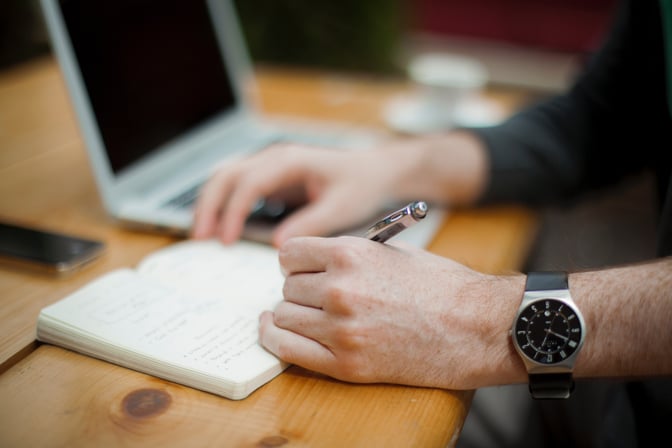The ICD-10 Sleep Apnea Code: What your dental team needs to know


Do you treat sleep apnea patients in your dental practice? If you file claims for insurance benefits, you need to know the correct ICD 10 sleep apnea code - yes, this treatment requires a medical code. With dentists consistently adding sleep related services to their procedure mix, the need to properly file a medical claim using the ICD10 sleep apnea code continues to rise as well. An oral appliance to treat sleep related conditions such as obstructive sleep apnea (OSA) and snoring is one of the most common that dentists provide. This article will address how to ensure the correct primary diagnosis code is submitted on the claim.
How are ICD-10 codes used in a dental office?
In dental, the primary code set we use and are most familiar with is CDT, short for Current Dental Terminology. The CDT code sets includes a list of codes used to document and report dental procedures to the dental payer and sometimes the medical payer, when appropriate. An ICD-10 code reports a diagnosis. Simply put, what medical condition exists. For this article’s purpose, it is why the oral appliance is required.
The diagnosis code is part of the International Classification of Disease (10th edition) code set. The ICD-10 code set that a dentist will always use is ICD-10-CM. CM is the acronym for Clinical Modification, which is what physicians, including dentists use for physician services rendered, such as dental treatment, regardless of the location (i.e., office, emergency room, etc.). A diagnosis code applies to dental claims in some instances when required by the payer.
.jpg?width=670&name=caroline-lm-8BkF0sTC6Uo-unsplash%20(2).jpg)
Who supplies the diagnosis code for an oral appliance treating sleep related conditions?
The medical physician treating the patient and/or the doctor who ordered and read the sleep study is responsible for the diagnosis, not the dentist. Most state dental boards consider ordering a sleep study, of any kind, and providing a diagnosis for sleep related conditions to be outside their scope of practice.
It is advisable to know your state laws and your state dental practice act before providing oral appliances to treat sleep apnea, snoring or other related sleep conditions, whether there is insurance involved or not.
Picking the right sleep apnea icd 10 code?
First, when reporting a diagnosis code on a medical or dental claim form, the golden rule of coding is only what is documented and fully supports the diagnosis can be reported. Specificity in documentation is key but especially when reporting a diagnosis code to a payer or even providing to another third party such as a pharmacist. As it relates to sleep apnea or snoring, the most common diagnoses codes are:
- G47.33 Obstructive sleep apnea (adult) (pediatric)
- G47.8 Other sleep disorders
- J98.8 Other specified respiratory disorders
- R06.83 Snoring
How to support the sleep apnea icd 10 code with documentation?
As we have already learned, the dentist is not responsible for the sleep condition diagnosis. However, the dentist does play a very important role in sleep medicine as a whole. When it comes to oral appliances, only a licensed dentist can provide and fit an oral appliance so dentists do play a vital role in sleep medicine; oral appliances and beyond.
The diagnosis will be included on the sleep study report and usually with the referral/order from the MD treating the sleep condition. It is important to ensure all documentation is obtained and included in the patient’s record. Always, confirm the diagnosis with the treating MD.
It is inappropriate to report a diagnosis code to get the claim paid. For example, you may have been told to always report G47.33 - the ICD 10 sleep apnea code for all sleep apnea appliance claims. While this code generally will get the claim paid, is that the accurate condition for your patient? It could be that the patient’s diagnosis is snoring.

Why do I have to have a diagnosis from a Medical Doctor for a snore guard?
Consider this, you may have a patient present with “my spouse sent me for a snore guard, because my snoring is really bad”. If you simply provide the appliance for snoring without first having an MD rule out more significant medical conditions that contribute to the patient’s snoring, the appliance could cause harm to the patient.
Dental Office: Sleep Apnea appliance claim filing tips to remember
- Confirm the medical sleep related diagnosis with the MD treating the condition prior to initiating treatment.
- Ensure the appropriate documentation is included in the patient’s chart.
- Look for a reliable source to provide accurate information when applying ICD10 sleep apnea codes on a medical or dental claim - social media chat rooms are not always the most reliable educational resource.
- The claim form is a legal document, something we in dentistry may forget from time to time.
- It is crucial that all information reported on a claim is accurate and can be supported with your patient documentation.
- Use specificity in your clinical documentation.
Remember, specificity is your keyword when reviewing your documentation for thoroughness. Specificity allows for accurate diagnoses to be reported whether by use of an ICD10 sleep apnea code or a narrative attached to a claim. Additionally, we are charged with proving that our services are medically necessary.
Our documentation tells a story and it must be the whole story! Learn more about proper documentation through participating in our live webinars in Dental Claims Academy.
Related Posts
Dental revenue resources from Dental Claim Support
